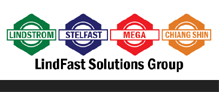Written by R.W. Baird analyst David J. Manthey, CFA with Quinn Fredrickson, CFA 9/8/25
Key Takeaway:
The seasonally adjusted Fastener Distributor Index (FDI) moderated sequentially but still stayed at an expansionary level, coming in at 51.3 (July 53.1). This reflected moderation in the sales index and slightly lower employment levels. The Forward-Looking Indicator (FLI) also normalized a bit to 54.3 (July 57.3), but remained at a healthy level, overall. Respondent commentary suggested reasonably positive August trends, but offset by an uncertain outlook amid tariffs which continue to pressure margins and reduce growth opportunities.
About the Fastener Distributor Index (FDI). The FDI is a monthly survey of North American fastener distributors, conducted with the FCH Sourcing Network and R. W. Baird. It offers insights into current fastener industry trends/outlooks. Similarly, the Forward-Looking Indicator (FLI) is based on a weighted average of four forward- looking inputs from the FDI survey. This indicator is designed to provide directional perspective on future expectations for fastener market conditions. As diffusion indexes, values above 50.0 signal strength, while readings below 50.0 signal weakness. Over time, results should be directly relevant to Fastenal (FAST) and broadly relevant to other industrial distributors such as W.W. Grainger (GWW) and MSC Industrial (MSM). Additional background information is available at:FastenersClearingHouse.com.
Key Points:
FDI moderates but remains above 50. This month, we saw the index slightly contracting m/m to 51.3 (vs. July 53.1). Seasonally-adjusted sales trends were weaker vs. a very strong July, with the index at 53.0 compared to 64.5 last month. However, this mainly reflected the seasonal adjustment factor as a similar percentage of respondents indicated sales were above seasonal expectations (42% vs. 41% last month). This continues to be slightly above average levels over the past year (37%). Of course, higher pricing continues to play a role in the sales performance, as pricing increased m/m for 61% of participants and 91% y/y. The m/m number was slightly lower vs. the 65% registered in July. Employment levels were also a slight drag on the index vs. July, as the share of participants saying employment was “higher than seasonal norms” decreased to 15% from 21%, though the overwhelming majority (79%) continue to say employment levels are in line. Supplier lead times and customer inventory levels were relatively unchanged m/m and had minimal impact on the FDI this month.
FLI also lower m/m. After registering a robust 57.3 reading last month, the FLI naturally moderated some in bAugust. The index came in at 54.3 this month, which, while lower m/m, still points to solid near-term momentum. The m/m moderation was due to slightly lower employment and a more measured six-month outlook. Regarding the outlook specifically, a slightly greater percentage of respondents are now anticipating lower six-month activity levels vs. today than were in July (August 27% vs. July 15%). The remainder of the survey anticipates either improvement (39%) or similar (33%). The ISM PMI, meanwhile, continues to suggest near-term contraction in the industrial economy, with August coming in at 48.7, although the index did see m/m improvement.
Tariff uncertainty continues to increase. Commentary on August suggests that results were surprisingly solid for several participants: “August was a good month. Not sure what to contribute it to. Still a lot of uncertainty in the market. Hoping we can hang on for four more months and end strong.” Similarly, another participant said, “After a dismal first week of August, sales revved-up the remainder of the month to give us a good total.” Certainly tariffs and associated price inflation are playing a role in sales performance: “Price increases are mainly due to pass through of Section 232 tariffs.” By market, trends appear to be uneven, with good trends in markets with secular growth drivers like data center offset by cyclical weakness in agriculture and oil & gas: “We are currently involved in several large data center projects which have shown large growth for us in 2025. Agriculture drives another large sector of our business and this is down significantly”; “Several key end user markets continue to show sluggish demand – specifically Ag Equipment and Oil & Gas.” While August feedback suggested a reasonably positive month, the outlook remains uncertain due to tariffs: “Uncertain what the next six months will be working in this unstable market right now especially with potential for more tariffs and slide of the dollar.” Margin feedback was also negative seemingly due to issues in fully passing along tariff-driven inflation: “Tariffs continue to disrupt our supply chain and requires us to pass on increases to customers. Very challenging environment currently. Margins are getting squeezed and inventories are rising due to tariffs.” Feedback indicates suppliers are no longer shouldering the tariff burden: “TARIFFS!!!!! Reality is they are split in some way between supplier and customer. Early on with lower tariffs I believe most suppliers absorbed a majority. We then began seeing them passed on to customers and now that most customers are accustomed to paying them, I think we will see a shift towards the full brunt of tariffs passed onto the end user. To me it signals inflation ticking up while suppliers see their bottom lines return to more normal levels as they no longer shoulder tariffs- which are here to stay for the foreseeable future.” Additionally, tariffs remain a significant distraction to selling and growth opportunities: “The terror tariffs continue to take away from valuable sales and growth opportunities.”
Fastenal reported August daily sales growth of +11.8% y/y, below our more aggressive +15.6% estimate but also slightly below what normal seasonality would have implied coming off a very strong July. Consistent with the m/m moderation in the FDI, fastener sales decelerated to 13.3% growth (from +14.6% in July). Elsewhere, safety sales were +10.2% and other non-fasteners grew +11.5% y/y. For September, we are modeling a further moderation to +9.7% y/y daily sales growth, which reflects mostly normal seasonality and further pricing lift from tariffs.
Risk Synopsis
Fastenal: Risks include economic sensitivity, pricing power, relatively high valuation, secular gross margin pressures, success of vending and on-site initiatives, and ability to sustain historical growth.
Grainger: Risks include ability to maintain margins, internet-only industrial supply sources, ability to sustain secular growth, cyclicality, and international operations.
For the full FDI report for August 2025, with graphs and disclosures, Click-here.



![[GC2610] Solution_FCH Banner_[220x100] copy](https://news.fastenersclearinghouse.com/wp-content/uploads/2025/09/banner_solutionind.jpg)

